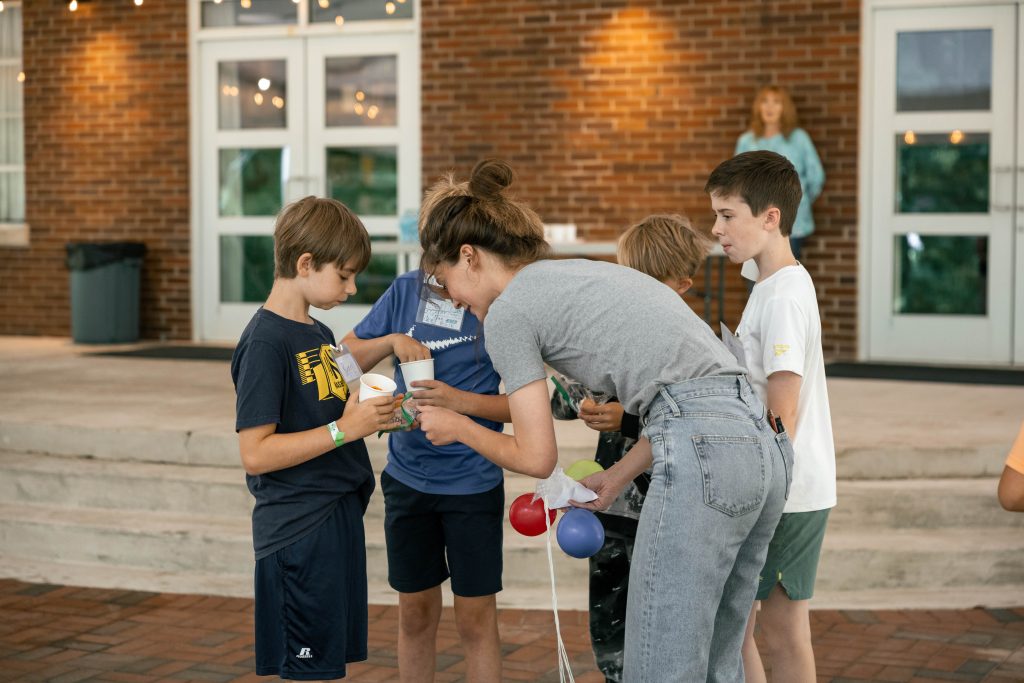2025 marks the 60th anniversary of humanity’s robotic exploration of Mars, with Mariner 4 returning the first flyby images of our neighbor in July 1965. Eleven years later, NASA would land Viking 1 on the surface of the Red Planet, making it the first truly successful probe to reach Mars’ surface and conduct scientific investigations. Just over two decades later, the rover Sojourner would make the first tracks in the rusty Martian soil as it rolled around to investigate the alien world. NASA often makes things look easy, but as many scientists and engineers have found out, getting to one of our nearby neighbors is a feat of engineering.
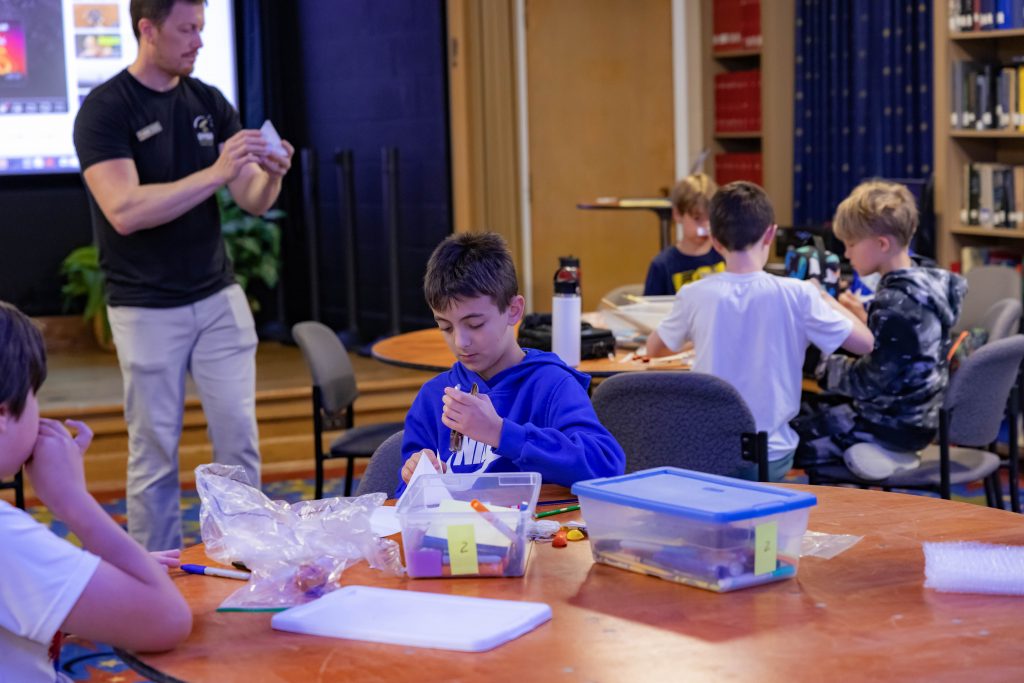
On June 13, a group of middle schoolers took on a similar task, though not quite as expensive and labor intensive. The mission was seemingly simple—create a lander that would protect an egg astronaut, or “egg-onaut,” on its way back to Earth after being dropped from 20 feet. Students began by learning more about the various missions that NASA has undertaken over the years and the ingenious ways they have successfully landed probes from small ones, such as Sojourner, to SUV-sized, plutonium-powered rovers like Curiosity and Perseverance. With designs in mind, pairs of students set out with identical sets of materials to construct a parachute-slowed, airbag-cushioned capsule using plastic film, balloons, bubblewrap, string, cardstock, and a hefty amount of the engineer’s secret weapon—tape. The first round of landers were very successful—all encapsulated egg-onauts touched down without a crack.
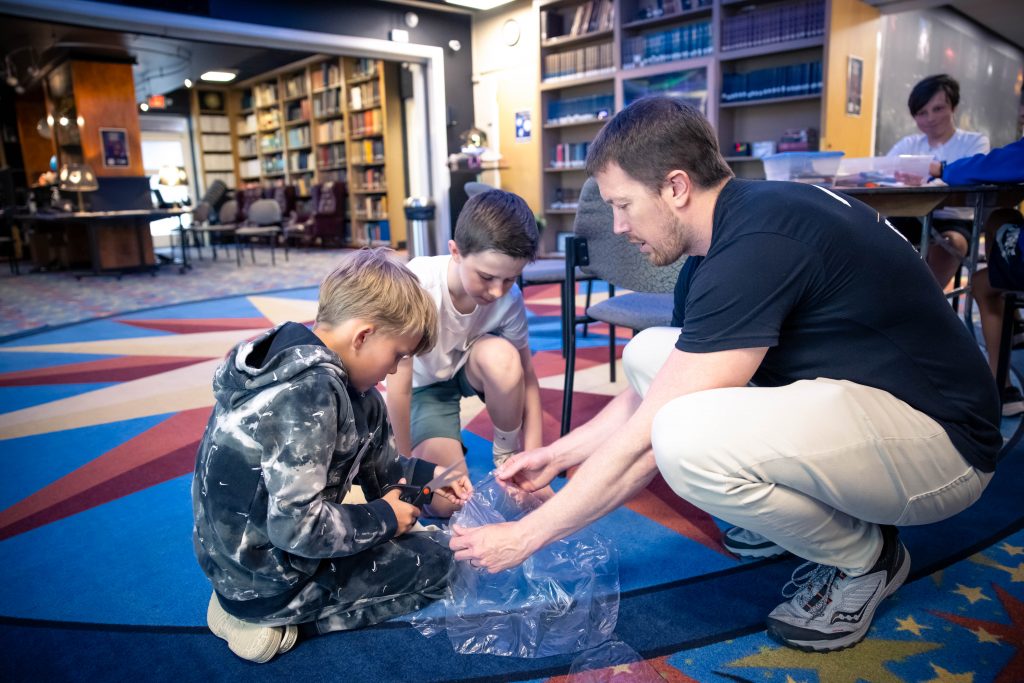
After a quick refreshment break, a second round of egg-onauts was commissioned in which the engineers-to-be could improve upon initial designs, especially after seeing how others’ landers performed. This time, however, the stakes were higher and students were given more freedom in designing their lander. In addition, another factor faced by real-life engineers was taken into consideration—time and budget constraints. Staff discussed how real-life missions are given a budget, how teams ultimately have the goal of achieving the mission while either meeting or coming in under budget, and that there are even times when missions go over budget (but there is always a limit). As such, the student teams were given a budget ($25 million) and a list of possible supplies with their associated costs. Groups would earn a point for every million dollars they came in under budget, lose a point for every million dollars they were over, and they were given a maximum amount they could go over budget. In addition, a 30-minute countdown timer was started once the challenge began, and teams were warned that they had to go to the launch site once the timer expired, regardless of the state of lander construction.
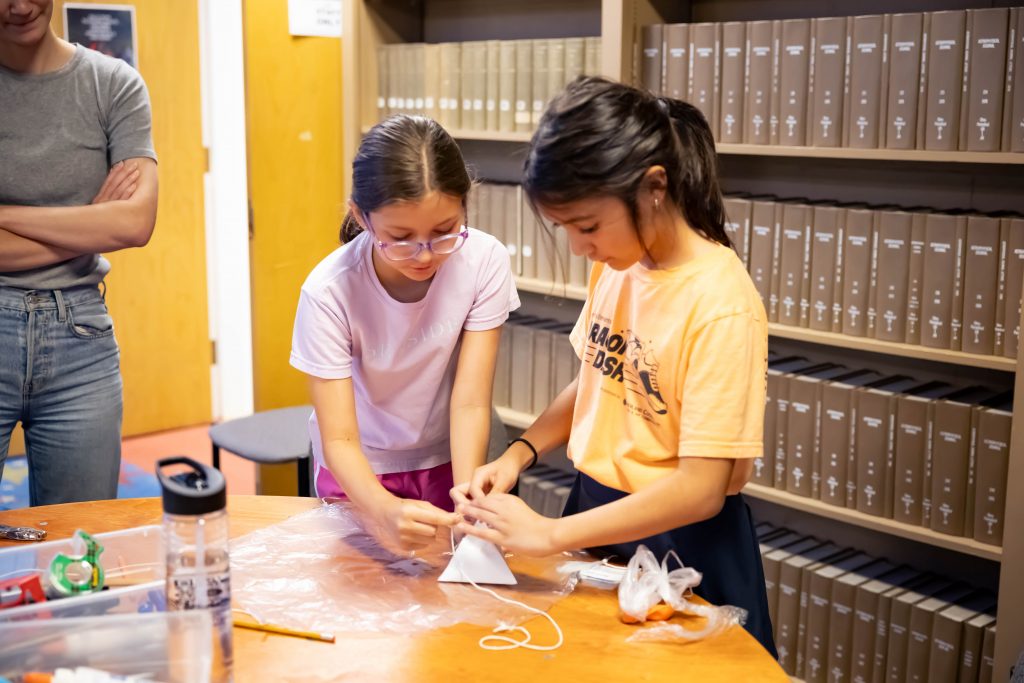
One other detail was brought to light—a parachute that works well on Earth will not work as well on Mars due to its much thinner atmosphere. To simulate this and further add to the challenge, groups were given the option of adding weights (small disk magnets) to their lander. For every magnet they added, they would be awarded a bonus point. If everything worked out, a team would achieve a high final score by coming in under budget and building a lander rugged enough to protect the fragile egg-onaut despite added weight. A team would only receive their points at the end of the challenge IF their egg-onaut survived unscathed—a small crack would result in zero points.
In the end, many teams went on to build similar designs as before but with improvements in anchoring the balloon airbags to better protect upon impact, adding other supplies such as drinking straws to serve as legs that absorbed shock upon landing, and more. Some ambitious teams were very confident in their designs, adding up to six small weights to their landers, while others decided to play it safe with their points and focus more on ensuring a good design while avoiding the temptation of adding bonus-point-laden weights. Teams were very conscious of the time, with all group members working together like true team players to complete their landers by the time the clock ran out.
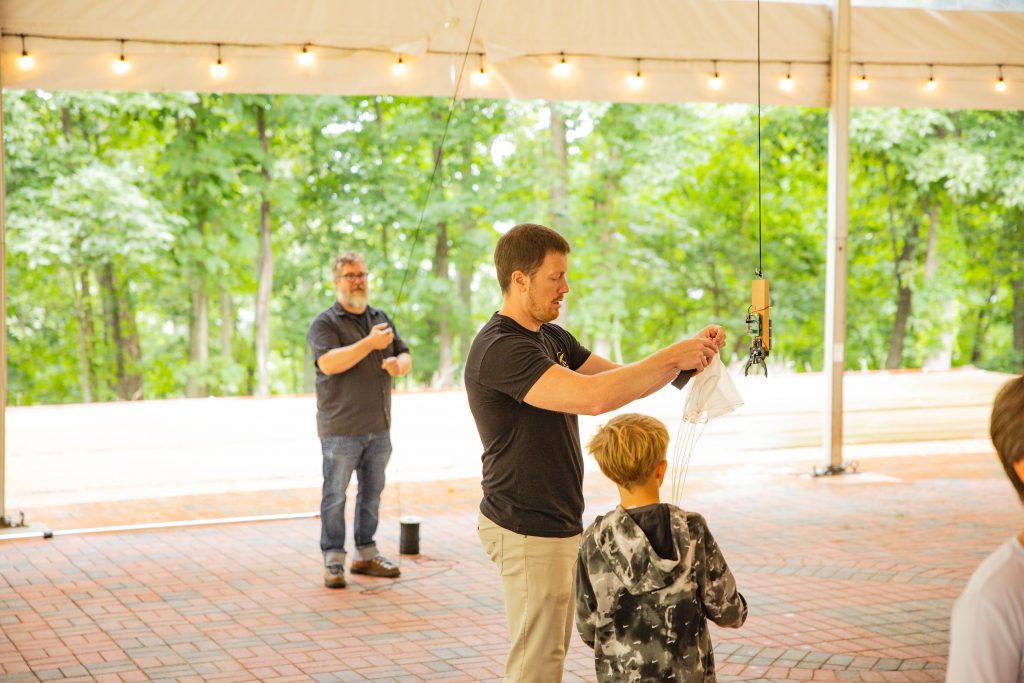
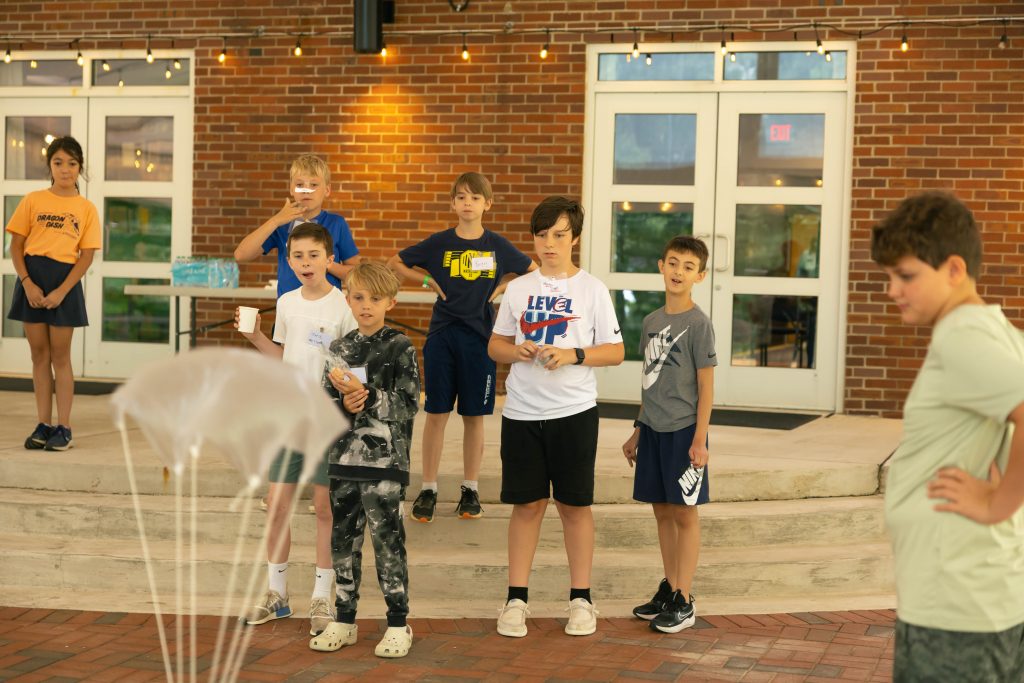
So how did it all work out? Well, let’s just say that the designs still need some tweaking. One by one, the landers were hoisted 2o feet above the back patio of Dyer Observatory by a remotely controlled grappling claw and released. Some descended rather gracefully, while others plummeted. Unfortunately, there were no egg-onauts that touched down without a scratch. Most succumbed to the weights added to the landers, and many groups were surprised at just how much one small weight can affect the descent rate of an unsuspecting egg-onaut. Most egg-onauts suffered major cracks while one team ended up with just a hairline fracture in the shell. In any case, all had signs of leakage, which resulted in zero points for all teams. One might say there were no winners, but we like to think they all came out even—it just depends if you see the egg-onaut as half-empty or half-full. In any case, everyone including the staff had a blast, and we look forward to the next time egg-onauts brave treacherous journeys at Dyer Observatory.
